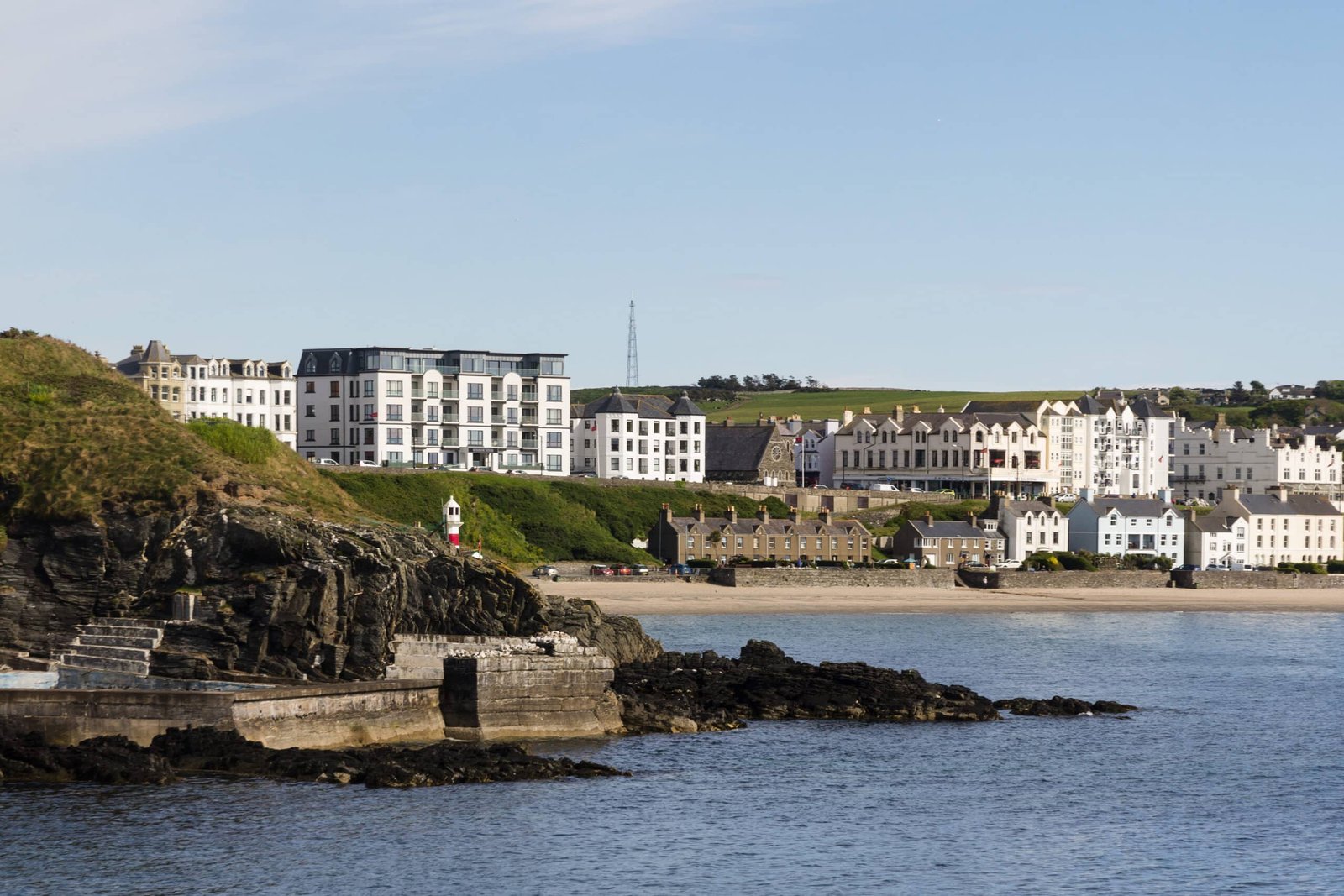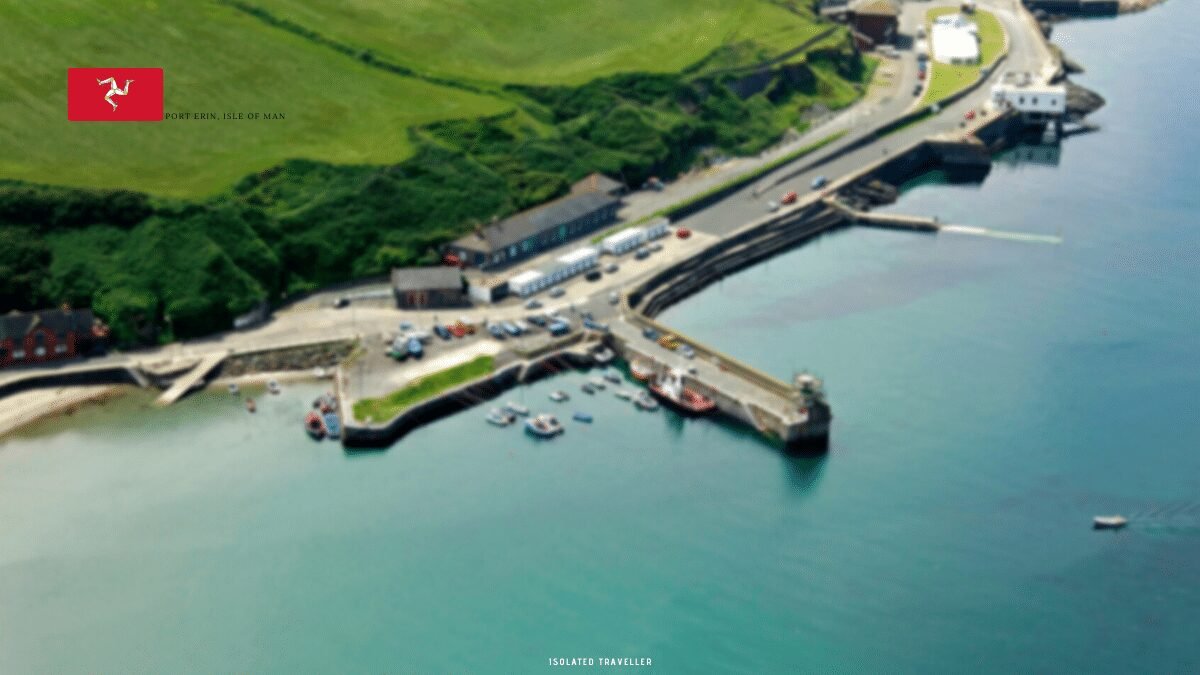Port Erin, Isle of Man
Port Erin is a seaside resort town on the Isle of Man’s southwestern coast. It is the third largest town on the island after Douglas and Ramsey and is located within the parish of Rushen.
Port Erin has a population of about 3,500 people and is a popular tourist destination due to its sandy beach, scenic scenery, and variety of recreational activities. The town also contains a number of historic structures, including the Port Erin Railway Station, which was built in 1874 and is now a heritage railway.
Port Erin provides a variety of amenities for visitors, including shops, restaurants, cafes, and pubs, in addition to its natural beauty and historical landmarks. The town also hosts a number of occasions throughout the year, including the Southern Agricultural Show and the Port Erin Beach Festival.
Overall, Port Erin is a quaint seaside town that offers visitors a special fusion of natural beauty, history, and culture.

Geography Of Port Erin
Port Erin is located on the southern coast of the Isle of Man, a small island in the Irish Sea between Great Britain and Ireland. The town is in the parish of Rushen, about 12 miles southwest of the island’s capital, Douglas.
Port Erin is located on the same-named bay, which is sheltered by steep cliffs and is one of the island’s most popular beaches. The town is also surrounded by hills, including Bradda Head to the south and Cronk ny Arrey Laa to the north.
Port Erin is where the River Colby empties into the ocean. The town also has a small harbour that is used by recreational boats and local fishermen. The nearby Calf of Man, a small island with a nature reserve and a variety of wildlife, is accessible by ferry from the harbour.
With mild temperatures and regular, moderate rainfall, Port Erin’s climate is categorized as temperate maritime. The town is frequently shielded from the prevailing winds due to its location on the southern coast of the Isle of Man, which can make it a pleasant place to visit even during the cooler months.
The sandy beach is located in a bay that is bordered by two headlands. On windy days, these headlands direct the prevailing westerly wind toward the village. The bay functions as a suntrap on sunny days. Bradda Glen, one of the Manx National Glens, is located to the north of the promenade. Milner’s Tower, a recognizable memorial tower, is located on Bradda Head, a northern headland. The seafront is slightly lower than the promenade, which is mostly made up of Victorian-era hotels. However, many of these hotels are currently being converted into flats and apartments due to changes in tourist preferences. The city is well-known for its views, which include stunning sunsets over Port Erin Bay and Bradda Head.
History Of Port Erin
Port Erin is a small seaside town on the southern coast of the Isle of Man, a self-governing British Crown Dependency in the Irish Sea. The town has a long and fascinating history that dates back to prehistoric times.
The Neolithic era, when an ethnic group known as the Beaker people arrived on the island, is when the earliest indication of human habitation in the region first appears. The Celts, who eventually founded a town at what is now known as Bradda Head, a promontory that overlooks Port Erin Bay, followed them.
The Isle of Man was a part of the Norse-Gaelic Kingdom of the Isles during the Viking era, which also included portions of Scotland, Ireland, and the Hebrides. Many Viking artefacts have been discovered in the region, which indicates that Port Erin was a significant Viking port.
The Kingdom of Norway and later the Kingdom of Scotland ruled over the Isle of Man during the Middle Ages. During this time, Port Erin continued to be a significant port. In the 18th and 19th centuries, the town gained popularity as a vacation spot because of its picturesque surroundings and comfortable weather.
Port Erin developed into a hub of commerce and industry at the beginning of the 20th century as a result of the construction of a railway station, a power plant, and several manufacturing facilities. The town served as a base for British military operations during World War II, and several fortifications were constructed nearby.
Port Erin is now a well-liked vacation spot, renowned for its lovely beaches, breathtaking scenery, and fascinating past. Explore the town’s numerous attractions, which include the stunning Bradda Glen Gardens, the Steam Railway Museum, and the Port Erin Heritage Museum. The town also has a lot of eateries, cafes, and shops, making it the ideal location for relaxation and entertainment.

Port Erin Economy
Tourism is the main driver of Port Erin’s economy; tourists from all over the world come to the town to take advantage of its gorgeous beaches, breathtaking scenery, and rich history. The local economy is supported by a variety of small businesses and shops in addition to tourism.
The port of the town continues to play a significant role in the local economy, as both fishing boats and recreational boats use the harbour. The Port Erin Lifeboat Station, which offers essential search and rescue services for the region, is a significant component of the town’s infrastructure.
In addition to a variety of eateries, cafes, and bars, Port Erin offers a number of hotels, guesthouses, and self-catering lodgings. A bakery, a post office, and a grocery store are among the small shops and businesses that can be found in the town.
The renovation of the train station and the building of a new marina are just two recent examples of investments made in the town’s infrastructure. These initiatives are intended to boost Port Erin’s tourism sector and draw more tourists to the region.
While Port Erin’s economy is small overall, it is vibrant and diverse, with a variety of businesses and industries supporting the neighbourhood. The town is a popular tourist destination, a wonderful place to live and work, and it has a rich history and beautiful natural surroundings.
Port Erin and nearby Attractions
Port Erin is a charming seaside community with lots to offer tourists. The following are a few of the top sights in and around Port Erin:
- Port Erin Beach: This expansive, sandy beach is ideal for swimming, sunbathing, and taking long coastal strolls. It’s one of the most well-liked tourist destinations in the area.
- The Port Erin Railway Museum houses a sizable collection of railroad artefacts, including carriages, locomotives, and other items from the peak of the Isle of Man Steam Railway.
- The Port Erin Heritage Museum, housed in a former church, provides information about the town’s history, including its maritime heritage and contribution to the growth of the island’s tourism sector.
- Bradda Head: This magnificent promontory offers sweeping views of the neighbourhood and looks out over Port Erin Bay. It’s a wonderful location for picnics and hikes.
- Calf of Man: A nature reserve, this small island is home to a variety of birdlife, including puffins, gannets, and razorbills. It is situated just off the coast of Port Erin.
- At the southernmost point of the Isle of Man, The Sound Visitor Centre provides breathtaking views of the Calf of Man and the nearby coastline. It’s a fantastic location to learn more about the natural history and wildlife of the area.
- One of the best-preserved monastic sites on the Isle of Man is Rushen Abbey, a medieval monastery that is situated close to Ballasalla. More information about the island’s religious and cultural history can be found there.
In general, Port Erin and the neighbourhood offer a variety of attractions that appeal to a range of interests. Everyone can find something to enjoy, whether their interests are in history, the natural world, or simply relaxing on the beach and soaking up the sun.

Related Articles

